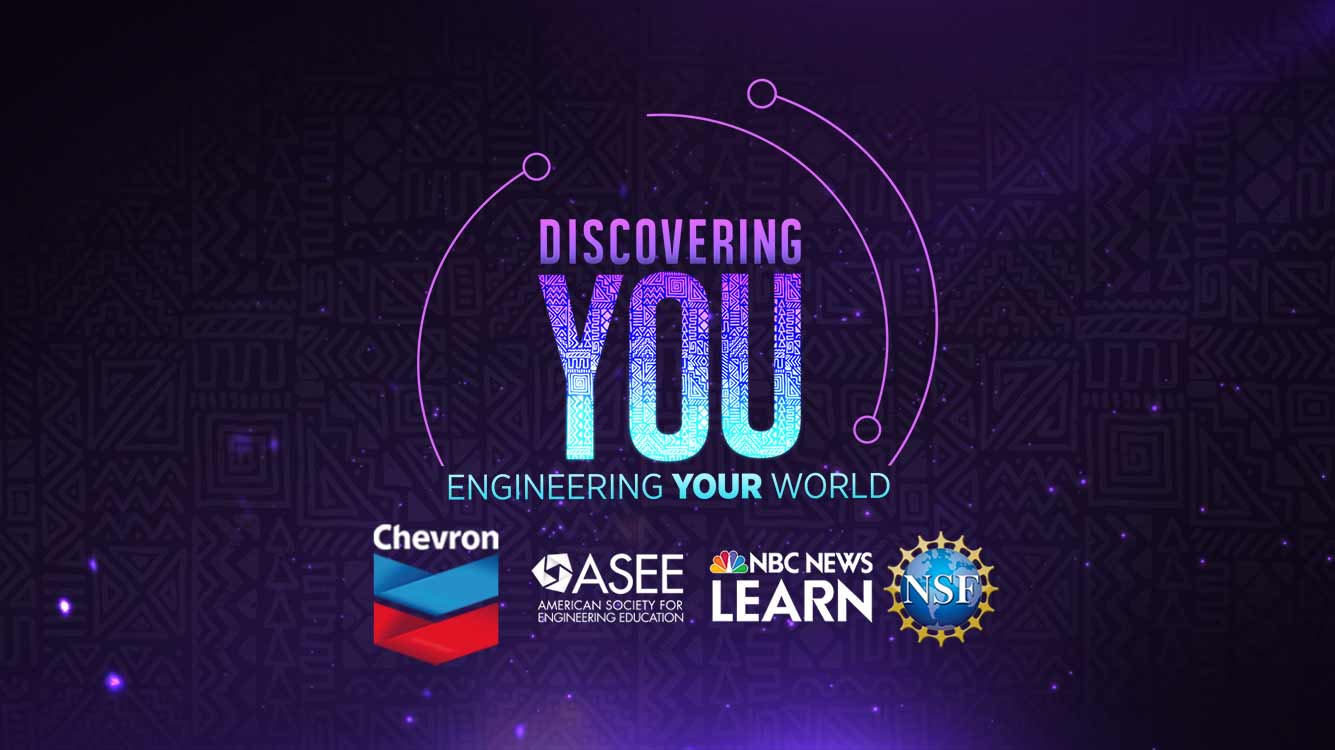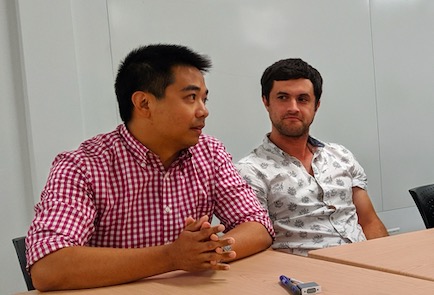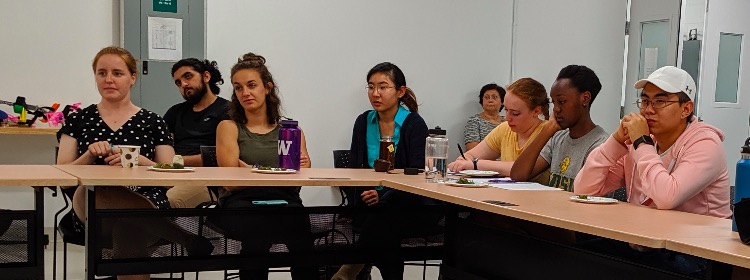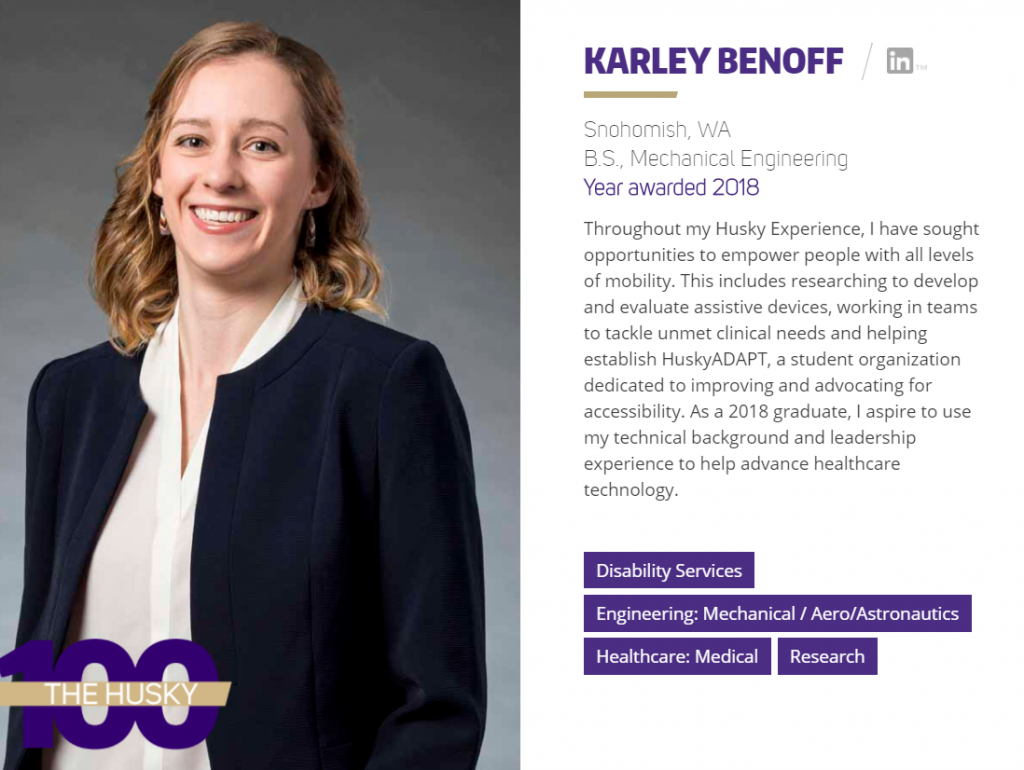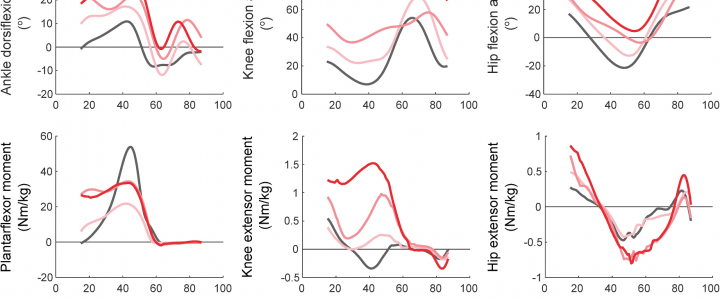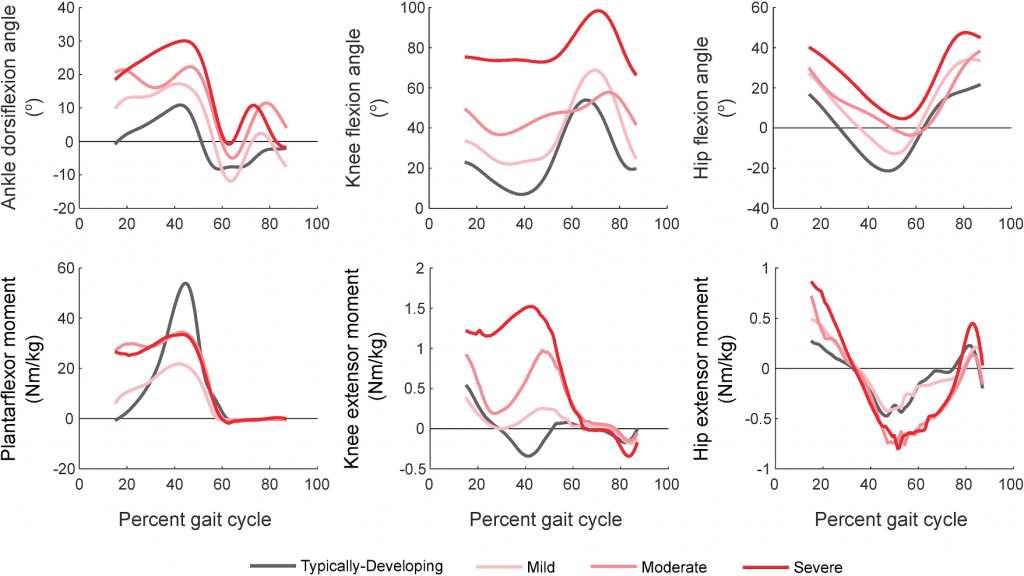Patent examiners spend their days critically evaluating the latest innovations, to determine if they are useful, novel, and non-obvious. When one of our students asked them what daily life is like as a patent examiner they responded, we basically write a 10-15 page report every 2-3 days.
Thankfully the patent office lets them escape from behind their computers a few times a year to meet with companies, research labs, and other entities. These visits help them see what is new and exciting in their specialty area.
We were lucky enough to host one of these teams this past week in the AMP Lab. Tim Stanis, a primary examiner from Art Unit 3786 that specializes in exoskeletons, orthoses, passive motion rehabilitation devices, and biomechanical technology led the visit. He was joined by nine other examiners.
Our lab demoed our latest creations in orthoses, biofeedback systems, and smartphone sensing. Patrick Aubin from the VA Hospital, Murray Maitland from Rehab Medicine, Chet Moritz from Electrical Engineering, and Tapo Bhattacharjee also shared their latest work.
We ended the session with a Q&A Panel for summer students to learn about career opportunities as a patent examiner and advice for new innovators. Most of the examiners had an undergraduate or master’s degree in engineering. They emphasized that working for the patent office is a great, flexible career path. As a patent examiner they are able to work remotely, have flexible hours, and enjoy other benefits such as having law school paid for.
For new innovators, they emphasized the importance of understanding the patent landscape. They recommended using Google Patents! Patents can seem intimidating. They recommended starting with the pictures and focusing on the claims. They also emphasized the importance of having a team. Translating technology requires team members with technical, business, and clinical backgrounds.
For our part, we were excited to meet real, live patent examiners. We appreciated seeing their faces and enjoyed sharing our work with them.

